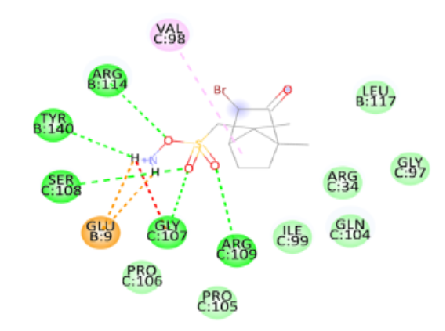


Indian Journal of Science and Technology
DOI: 10.17485/IJST/v16i47.2996
Year: 2023, Volume: 16, Issue: 47, Pages: 4504-4511
Original Article
Paramita Das1*, Rahim Bagwan1, Syed Sohaila2, Anjali Nayak1, Ishika Sanyasi1, Padma P Prabhu3, M K Ranganath1
1Department of Pharmaceutical Chemistry, Krupanidhi College of Pharmacy, Bengaluru, Karnataka, India
2Department of Pharmacology, Krupanidhi College of Pharmacy, Bengaluru, Karnataka, India
3Department of Pharmaceutical Chemistry, Srinivas College of Pharmacy, Mangalore, Karnataka, India
*Corresponding Author
Email: [email protected]
Received Date:24 November 2023, Accepted Date:08 December 2023, Published Date:20 December 2023
Objective: To isolate and evaluate bioactive compounds from Curcuma caesia rhizomes for its novel potential anti-tuberculosis agents. Methods: Curcuma caesia rhizomes were meticulously collected and authenticated. Phytochemical screening and GC-MS analyses were conducted to identify the chemical constituents of the plant. Isolation of a bioactive phytoconstituent was achieved, followed by the characterization using HPLC, TLC, and FTIR techniques. The isolated compound was then subjected to biological evaluation, including anti-tuberculosis activity assessment and MTT assay, revealing its potential as a novel anti-tuberculosis agent. Findings: Alkaloids, flavonoids, phytosterols, saponins, and phenolics were identified among the chemical components in the early phytochemical screening. Bioactive compounds were extracted using methanol, and the compound, (+)-3-Bromocamphor-8-Sulfonic Acid Ammonium Salts, showed positive for anti-tuberculosis agent. In silico docking studies of isolated compounds and proteins showed conventional hydrogen bonds with 8hcr 5sxf. The compound adheres to Lipinski’s rule of five, suggesting its potential as a drug-like molecule. Novelty: The isolation of novel (+)-3-Bromocamphor-8-sulfonic acid ammonium salts showed a potential anti-tuberculosis role that can act against drug-resistant strains of Mycobacterium tuberculosis. Adherence to Lipinski's rule of five suggests that it is a drug-like molecule, emphasizing its potential for further drug development.
Keywords: Curcuma caesia, (+)3Bromocamphor8Sulfonic Acid Ammonium Salts, Antitubercular activity, Mycobacterium tuberculosis, MTT assay
© 2023 Das et al. This is an open-access article distributed under the terms of the Creative Commons Attribution License, which permits unrestricted use, distribution, and reproduction in any medium, provided the original author and source are credited. Published By Indian Society for Education and Environment (iSee)
Subscribe now for latest articles and news.